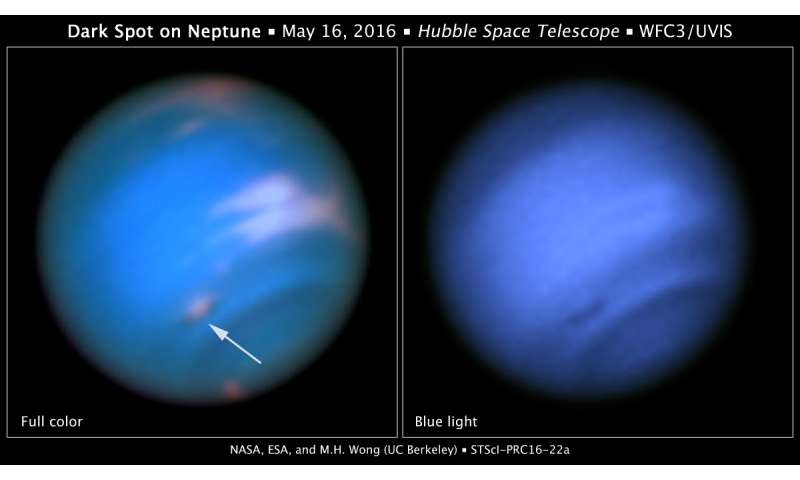Best of Last Week – Dark spot on Neptune, China tops supercomputer speed list and brain tumors in highly educated people

(ScienceX)—It was a good week for space research as a team at Wageningen University in the Netherlands reported that crops grown in 'Mars' soil were found safe to eat—the soil was not actually retrieved from Mars, of course, but was made up of material similar to that on the surface of the Red Planet. Another team working on the Venus Express mission reported that they had found evidence that an 'electric wind' can strip Earth-like planets of oceans and atmospheres. Evidence that such a wind exists on Venus suggests it likely happens on other planets as well.
And researchers analyzing data from Hubble confirmed a new dark spot on Neptune—a dark vortex in its atmosphere. Also, a combined team of researchers with MIT and Australian National University announced new technology that could double the sensitivity of LIGO sensors, allowing gravitational wave detectors to reach deeper into space. And Carnegie's Peter Driscoll asked, what did Earth's ancient magnetic field look like? He thinks our planet may have had several poles rather than the current two.
In other news, a team of researchers with George Washington University assessed power plants that convert all of their CO2 emissions into carbon nanotubes—specifically natural gas plants—and found the concept to be economically feasible. The technology would not only reduce greenhouse gas emission, but produce a useable product. There was a report on the U.S. Navy developing an electromagnetic cannon. And a team at Queen Mary University of London reported on unexpected findings that revealed insights into how cancer spreads in the body—cancer cells appear to get help from molecules known as 'integrins' as part of metastasis. Also, China topped the global supercomputer speed list for the seventh year in a row with its Sunway TaihuLight machine—it is capable of performing a quadrillion calculations per second.
And finally, if you are someone with a lot of schooling, you might want to read the report by a team of researchers working in Sweden—they found that high levels of education could be linked to a heightened brain tumor risk, particularly gliomas.
© 2016 ScienceX